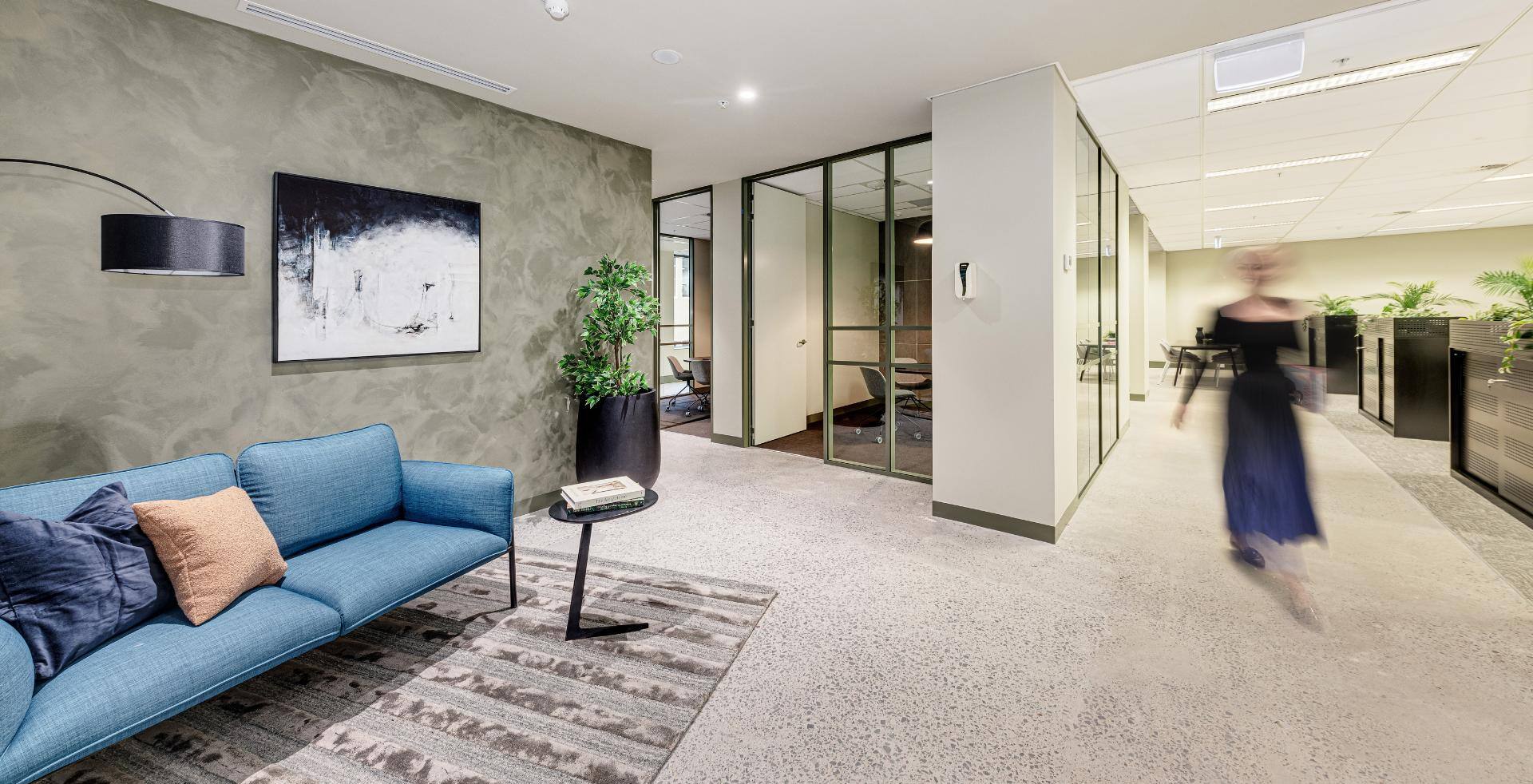ESG (Environmental, Social and Governance) in Office Design and Construction
In today's rapidly evolving world, sustainability and responsible business practices are increasingly important across various industries. Companies are now prioritising the integration of ESG principles — Environmental, Social, and Governance — into their operations.
In this article, we will discuss how businesses can incorporate ESG into their office design to shape workspaces that are not only visually appealing and practical but also eco-friendly, socially conscious, and aligned with the values of their stakeholders.
Whether you're a facility manager, decision-maker, or simply curious about sustainable construction, join us as we uncover actionable ideas and insights to create environmentally conscious and socially responsible workspaces.
What Is ESG?
ESG, an acronym for Environmental, Social, and Governance, refers to a set of principles that guide responsible and sustainable business practices. It represents a comprehensive framework for evaluating the impact and performance of companies in areas beyond financial returns.
Let's take a closer look at each component of ESG:
- Environmental: The environmental aspect of ESG focuses on a company's impact on the planet and its commitment to ecological sustainability. This includes factors such as energy consumption, carbon emissions, waste management, water usage, and sustainable materials. Companies that embrace the environmental pillar of ESG aim to minimise their ecological footprint, mitigate climate change, and preserve natural resources.
- Social: The social dimension of ESG encompasses a company's impact on society and its stakeholders. It involves considerations related to human rights, labour practices, employee well-being, diversity and inclusion, community engagement, and customer satisfaction. Companies aim to recognise the importance of fair and ethical practices, fostering positive relationships with employees, customers, suppliers, and the communities in which they operate.
- Governance: The governance aspect of ESG refers to the structures and processes that govern a company's operations, ensuring transparency, accountability, and ethical decision-making. It encompasses board composition, executive compensation, shareholder rights, risk management, and adherence to legal and regulatory requirements. Companies strive for strong corporate governance, integrity, and ethical conduct at all levels of their organisation.
ESG has gained significant traction in recent years as investors, consumers, and stakeholders increasingly recognise the importance of sustainable and socially responsible business practices.
The voice of consumers is clear: 83 percent believe that companies are responsible for actively shaping ESG best practices. Moreover, a staggering 76 percent of consumers are willing to sever ties with companies that demonstrate poor treatment towards employees, communities, and the environment.

How You Can Incorporate ESG Into Your Office Design — Without Blowing Your Budget
Embracing Sustainable Materials: Exploring the Use of Recycled and Renewable Resources in Interior Design
When it comes to ESG in office design and construction, using sustainable materials is key. Companies can reduce their environmental impact by choosing recycled and renewable resources like reclaimed wood, recycled plastic, and natural fibres.
Not only does this help reduce waste, but it also adds character and visual appeal to office spaces. Using sustainable materials also supports corporate social responsibility initiatives, enhancing a company's reputation.
Biophilic Design: Incorporating Nature for Improved Health, Productivity, and Environmental Benefits
Biophilic design focuses on integrating natural elements and patterns into the built environment, promoting the well-being of occupants. By incorporating features like living walls, natural light, and indoor plants, companies can create healthier and more productive office spaces.
Biophilic design also improves air quality, reduces stress, and enhances the overall aesthetic appeal of the workspace.
Energy-Efficient Lighting Solutions: Promoting Eco-Friendly Illumination in Office Spaces
Switching to energy-efficient lighting solutions is easy and affordable. By transitioning to LED lighting and implementing smart lighting controls, for example, companies can significantly reduce energy consumption and associated greenhouse gas emissions. LED lights alone use 75 percent less energy and last 25 times longer than traditional incandescent lighting.
Additionally, lighting design can foster well-being by considering circadian rhythms and utilising human-centric Cartesian lighting principles like individualised lighting sources, dynamic lighting, and natural light integration. Such measures not only contribute to ESG goals but also create stunning and comfortable work environments.
The Role of Ergonomics in Sustainable Design: Creating Healthy Work Environments
Integrating ergonomic principles into office design promotes employee health, productivity, and job satisfaction. Ergonomically designed furniture and workstations reduce the risk of musculoskeletal disorders and improve overall well-being.
Waste Management Strategies in Interior Design: Minimising Environmental Footprint and Promoting Circular Economy
Effective waste management is a critical component of sustainable design and construction. Companies can minimise their environmental footprint by adopting strategies such as recycling programs, waste reduction initiatives, and using reclaimed materials.
Embracing the principles of the circular economy, which prioritise the reuse and recycling of resources, allows for the creation of environmentally responsible office spaces.
Indoor Air Quality: Designing for Clean, Healthy, and Well-Ventilated Office Spaces
Indoor air quality has a significant impact on employee health and productivity — one study found a direct correlation between perceived air quality and ventilation and employee performance.
Designing for proper ventilation, incorporating air purifying technologies, and using low-emission materials contribute to healthier office environments. Moreover, good indoor air quality aligns with ESG objectives by reducing the environmental impact of buildings and promoting occupant well-being.

Pursuing Green Building Certifications: Understanding Green Star and NABERS in Interior Design
Green building certifications such as Green Star and NABERS provide recognised frameworks for assessing and improving the environmental performance of buildings. By pursuing these certifications, companies demonstrate their commitment to sustainability and ESG principles.
Understanding the requirements and benefits of these certifications can help organisations make informed decisions when designing their office spaces.
Sustainable Furniture and Furnishings: Balancing Style, Functionality, and Environmental Responsibility
Companies can prioritise sustainable options when selecting furniture and furnishings for office spaces. Choosing products crafted from responsibly sourced materials, such as FSC-certified wood, and opting for furniture with recyclable components contribute to ESG goals.
Enhancing Connectivity and Collaboration: Integrating Smart Technology in Sustainable Office Design
Smart technology in office design enables energy efficiency, resource optimisation, and improved connectivity. Smart lighting controls, occupancy sensors, and building automation systems can significantly reduce energy consumption while enhancing user comfort. Embracing these technological advancements aligns with ESG principles and demonstrates a commitment to sustainable and forward-thinking practices.
Employee Well-Being and Sustainability: Promoting Health, Happiness, and Environmental Consciousness Through Design
In addition to environmental considerations, ESG principles encompass social aspects such as employee well-being and community impact. Companies can promote employee health and happiness by providing flexible or hybrid work arrangements, promoting work-life balance, and fostering a sense of community within the workspace.
Designing offices that encourage social interaction, collaboration, and personal growth contributes to a positive company culture aligned with ESG objectives.
Longevity of Design: Embracing Modular Sustainability
Achieving longevity in design while keeping spaces fresh is an important consideration. Designing in a modular and sustainable fashion allows for timeless base finishes that can be easily updated or refreshed with minimal environmental impact. This approach ensures that office spaces remain functional and aesthetically pleasing while minimising the need for major renovations or redesigns in the future.
Considerations Beyond the Whole Building: The Relevance of WELL Certification
While Green Star and NABERS certifications focus on the entire building, WELL certification provides a framework that directly addresses the well-being of occupants within individual tenancy spaces. WELL certification covers policies and social initiatives contributing to a healthy and sustainable work environment.

Embrace ESG in Your Workplace
As the importance of sustainability in business practices grows, it's now necessary to incorporate ESG principles into your design and construction journey. This means using sustainable materials, incorporating biophilic design, installing energy-efficient lighting, considering ergonomic factors, implementing waste management strategies, improving indoor air quality, and obtaining green certifications. You can create office spaces supporting ESG objectives while promoting employee well-being, community involvement, and efficient space utilisation.
Remember, it's essential to take a holistic approach to ESG in design and construction, focusing on both the tangible aspects and employee experience. Not only will this contribute to a healthier planet, but it will also boost your company's reputation, employee satisfaction, and long-term success.
Click here to learn more about our Design team.

/Cap%20Stats/amicus-company-profile-blog.jpg)


-2.png)







/Sectors/Office/contact-amicus.jpg)